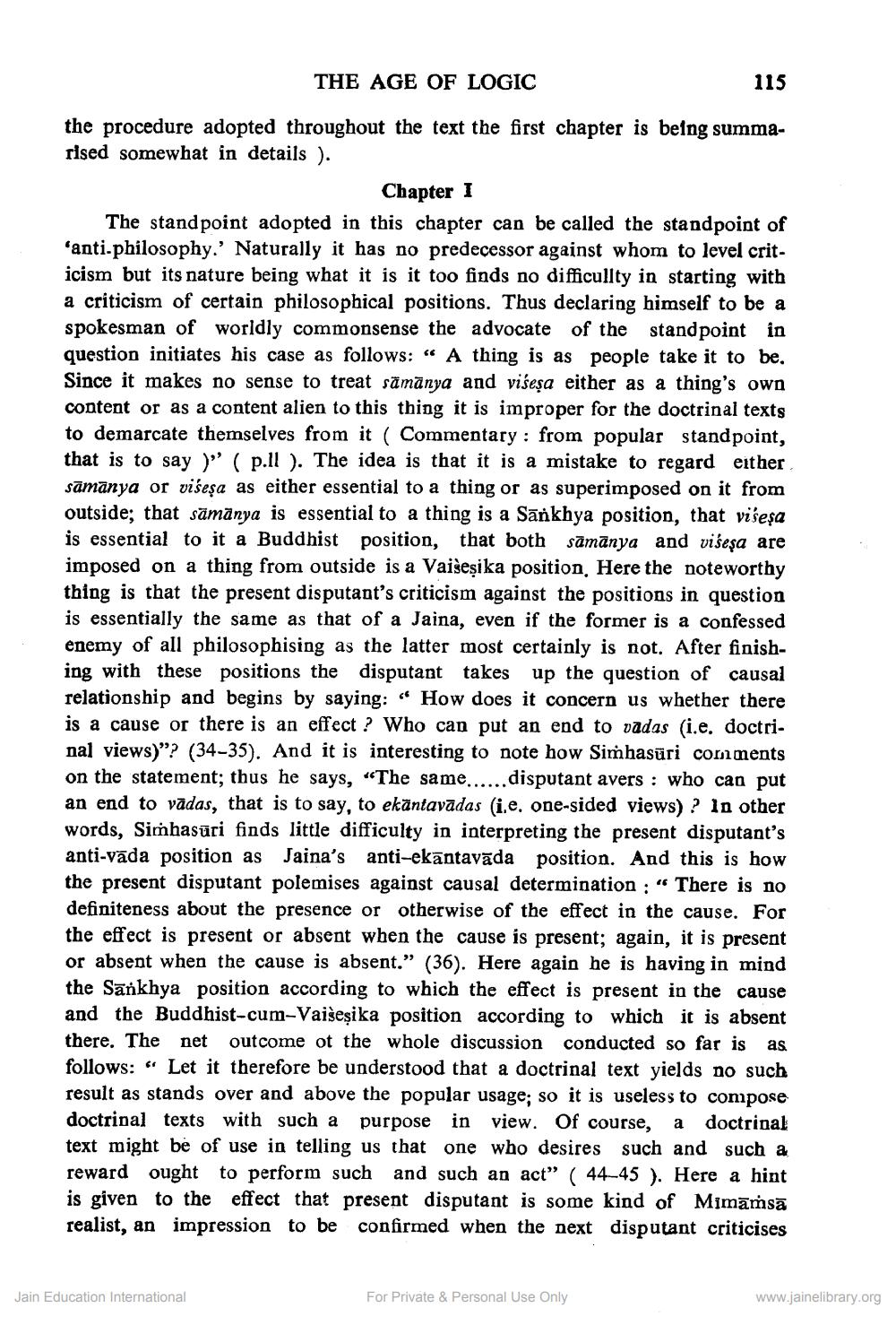________________
THE AGE OF LOGIC
115
the procedure adopted throughout the text the first chapter is being summarised somewhat in details ).
Chapter 1 The standpoint adopted in this chapter can be called the standpoint of "anti-philosophy.' Naturally it has no predecessor against whom to level criticism but its nature being what it is it too finds no difficullty in starting with a criticism of certain philosophical positions. Thus declaring himself to be a spokesman of worldly commonsense the advocate of the standpoint in question initiates his case as follows: “ A thing is as people take it to be. Since it makes no sense to treat sāmānya and višeşa either as a thing's own content or as a content alien to this thing it is improper for the doctrinal texts to demarcate themselves from it ( Commentary : from popular standpoint, that is to say )» (p.ll ). The idea is that it is a mistake to regard either sāmānya or viseşa as either essential to a thing or as superimposed on it from outside; that sämänya is essential to a thing is a Sankhya position, that viseșa is essential to it a Buddhist position, that both sāmānya and višeşa are imposed on a thing from outside is a Vaišeșika position. Here the noteworthy thing is that the present disputant's criticism against the positions in question is essentially the same as that of a Jaina, even if the former is a confessed enemy of all philosophising as the latter most certainly is not. After finishing with these positions the disputant takes up the question of causal relationship and begins by saying: “ How does it concern us whether there is a cause or there is an effect? Who can put an end to vadas (i.e. doctrinal views)"? (34-35). And it is interesting to note how Simhasüri comments on the statement; thus he says, "The same...... disputant avers : who can put an end to vādas, that is to say, to ekāntavādas (i.e, one-sided views)? In other words, Simhasüri finds little difficulty in interpreting the present disputant's anti-vāda position as Jaina's anti-ekantavāda position. And this is how the present disputant polemises against causal determination : " There is no
ness about the presence or otherwise of the effect in the cause. For the effect is present or absent when the cause is present; again, it is present or absent when the cause is absent.” (36). Here again he is having in mind the Sankhya position according to which the effect is present in the cause and the Buddhist-cum-Vaiseșika position according to which it is absent there. The net outcome ot the whole discussion conducted so far is as
" Let it therefore be understood that a doctrinal text yields no such result as stands over and above the popular usage; so it is useless to compose doctrinal texts with such a purpose in view. Of course, a doctrinal text might be of use in telling us that one who desires such and such a reward ought to perform such and such an act" ( 44-45 ). Here a hint is given to the effect that present disputant is some kind of Mimāṁsā realist, an impression to be confirmed when the next disputant criticises
Jain Education International
For Private & Personal Use Only
www.jainelibrary.org




